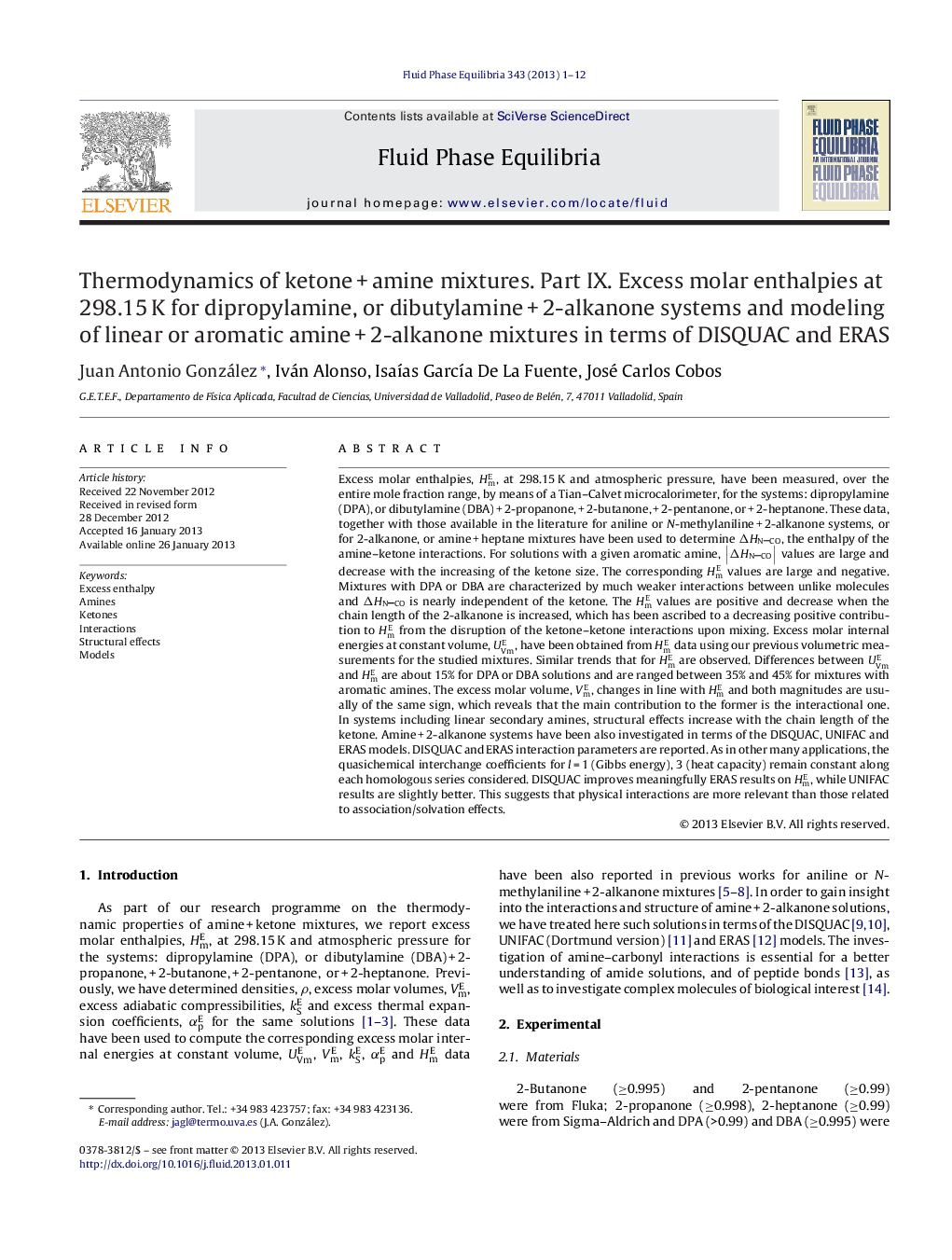| کد مقاله | کد نشریه | سال انتشار | مقاله انگلیسی | نسخه تمام متن |
|---|---|---|---|---|
| 201536 | 460555 | 2013 | 12 صفحه PDF | دانلود رایگان |

Excess molar enthalpies, HmE, at 298.15 K and atmospheric pressure, have been measured, over the entire mole fraction range, by means of a Tian–Calvet microcalorimeter, for the systems: dipropylamine (DPA), or dibutylamine (DBA) + 2-propanone, + 2-butanone, + 2-pentanone, or + 2-heptanone. These data, together with those available in the literature for aniline or N-methylaniline + 2-alkanone systems, or for 2-alkanone, or amine + heptane mixtures have been used to determine ΔHNCO, the enthalpy of the amine–ketone interactions. For solutions with a given aromatic amine, ΔHNCO values are large and decrease with the increasing of the ketone size. The corresponding HmE values are large and negative. Mixtures with DPA or DBA are characterized by much weaker interactions between unlike molecules and ΔHNCO is nearly independent of the ketone. The HmE values are positive and decrease when the chain length of the 2-alkanone is increased, which has been ascribed to a decreasing positive contribution to HmE from the disruption of the ketone–ketone interactions upon mixing. Excess molar internal energies at constant volume, UVmE, have been obtained from HmE data using our previous volumetric measurements for the studied mixtures. Similar trends that for HmE are observed. Differences between UVmE and HmE are about 15% for DPA or DBA solutions and are ranged between 35% and 45% for mixtures with aromatic amines. The excess molar volume, VmE, changes in line with HmE and both magnitudes are usually of the same sign, which reveals that the main contribution to the former is the interactional one. In systems including linear secondary amines, structural effects increase with the chain length of the ketone. Amine + 2-alkanone systems have been also investigated in terms of the DISQUAC, UNIFAC and ERAS models. DISQUAC and ERAS interaction parameters are reported. As in other many applications, the quasichemical interchange coefficients for l = 1 (Gibbs energy), 3 (heat capacity) remain constant along each homologous series considered. DISQUAC improves meaningfully ERAS results on HmE, while UNIFAC results are slightly better. This suggests that physical interactions are more relevant than those related to association/solvation effects.
Figure optionsDownload as PowerPoint slideHighlights
► HmE at 298.15 K are reported for dipropylamine (DPA), or dibutylamine (DBA) + 2-alkanone.
► ΔHNCO of aromatic amines mixtures are large and HmE values are large and negative.
► Amine–ketone interactions are much weaker in DPA or DBA mixtures; HmE values are positive.
► DISQUAC, UNIFAC and ERAS models have been applied.
► Physical theories improve ERAS HmE results. Physical interactions are more relevant.
Journal: Fluid Phase Equilibria - Volume 343, 15 April 2013, Pages 1–12